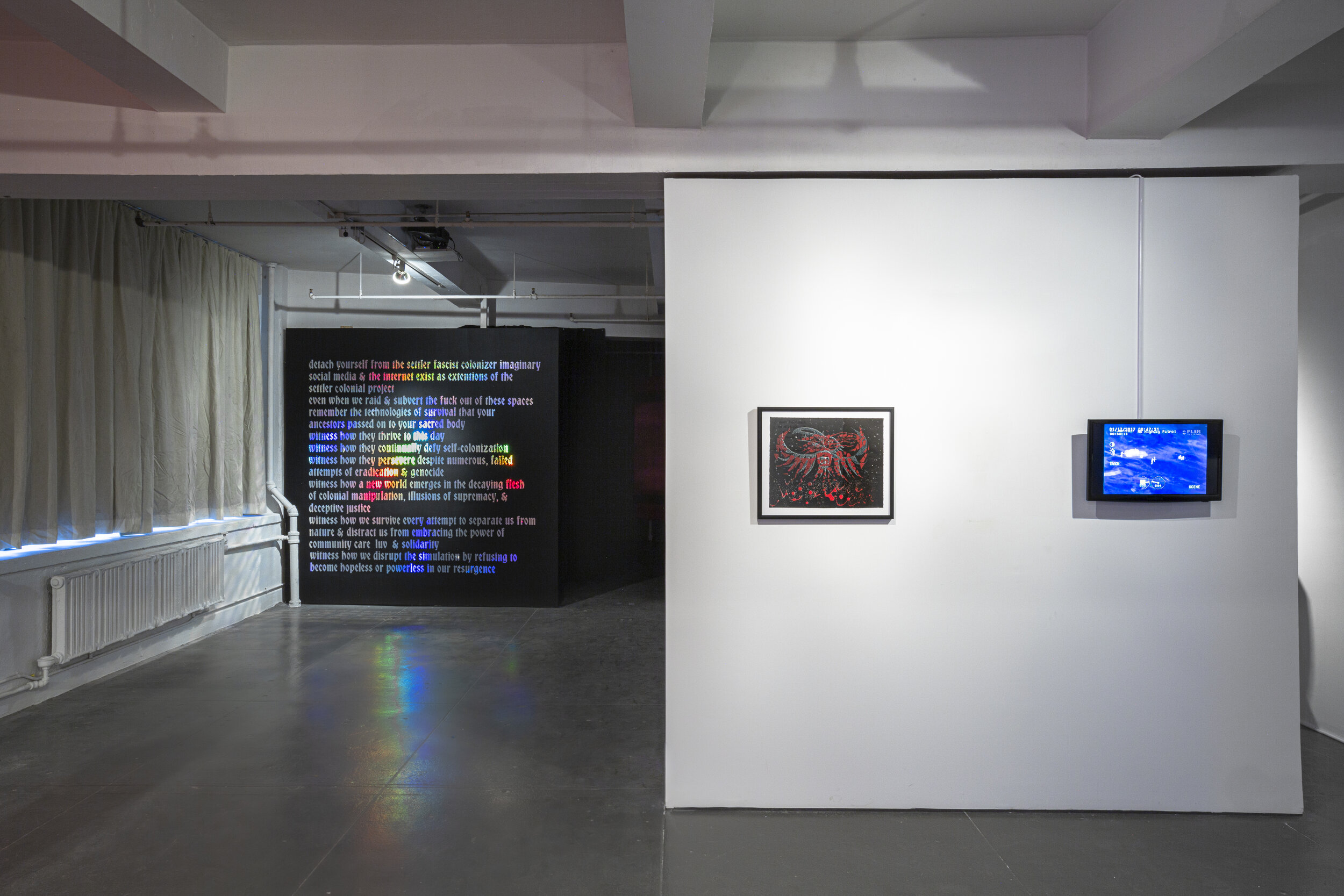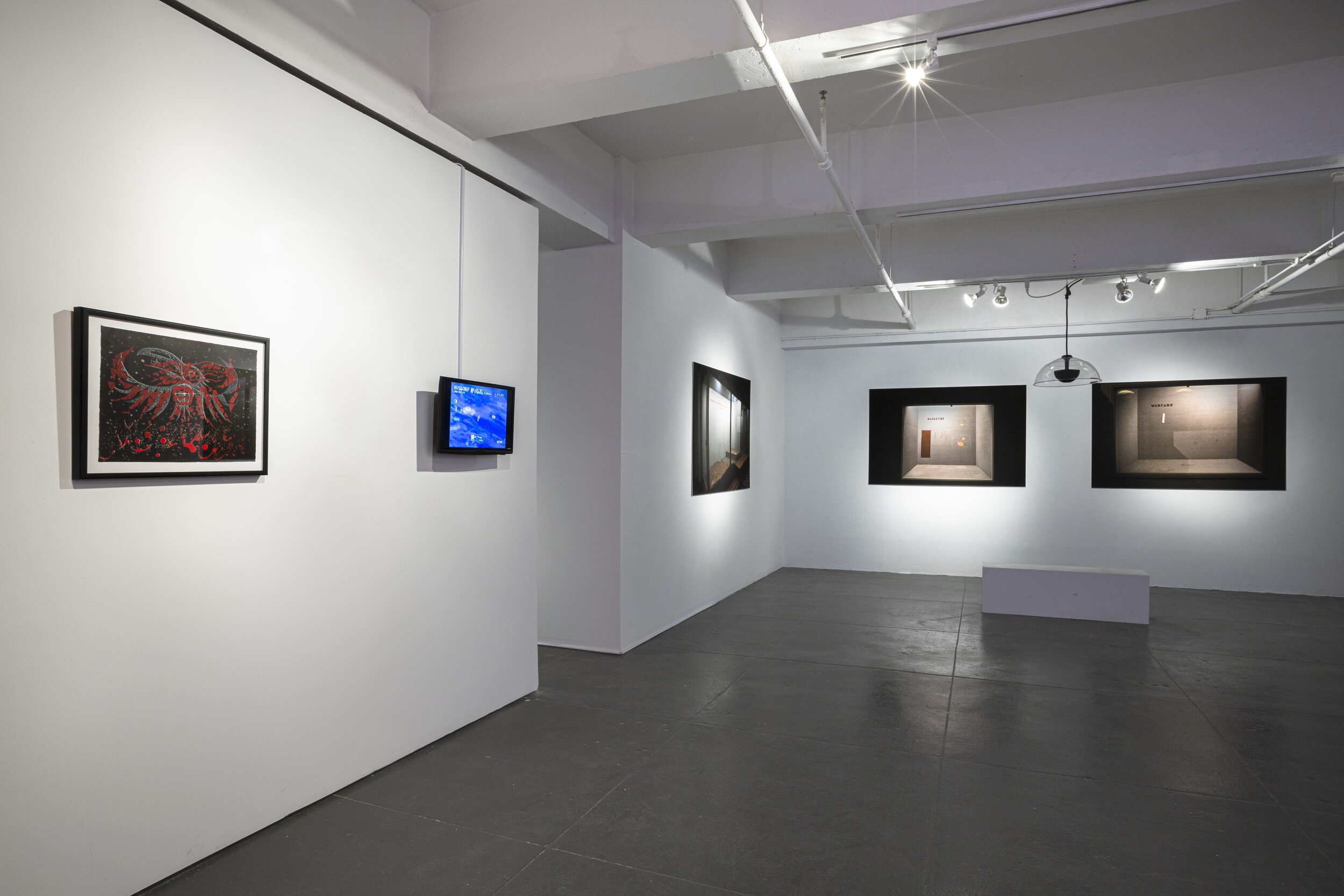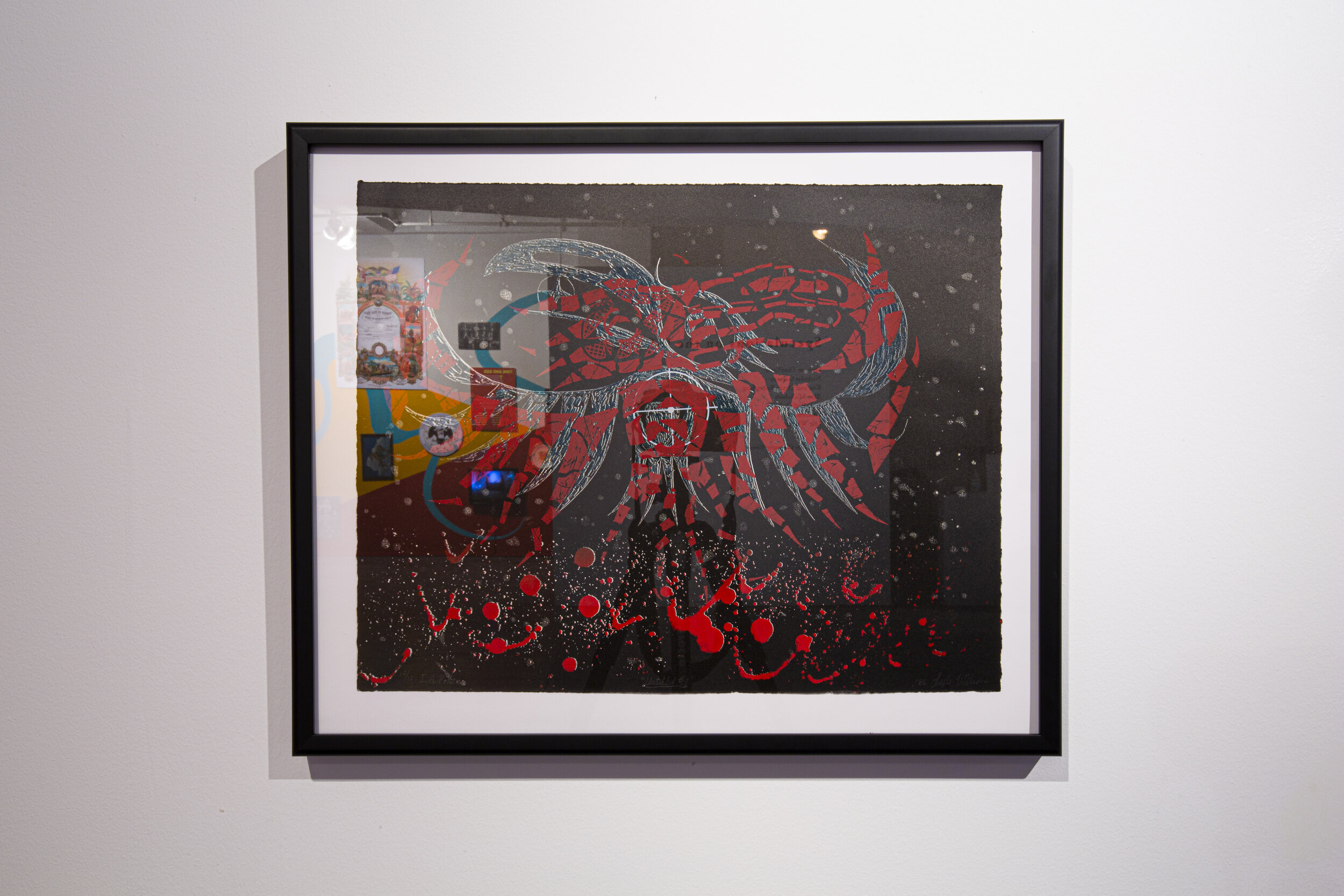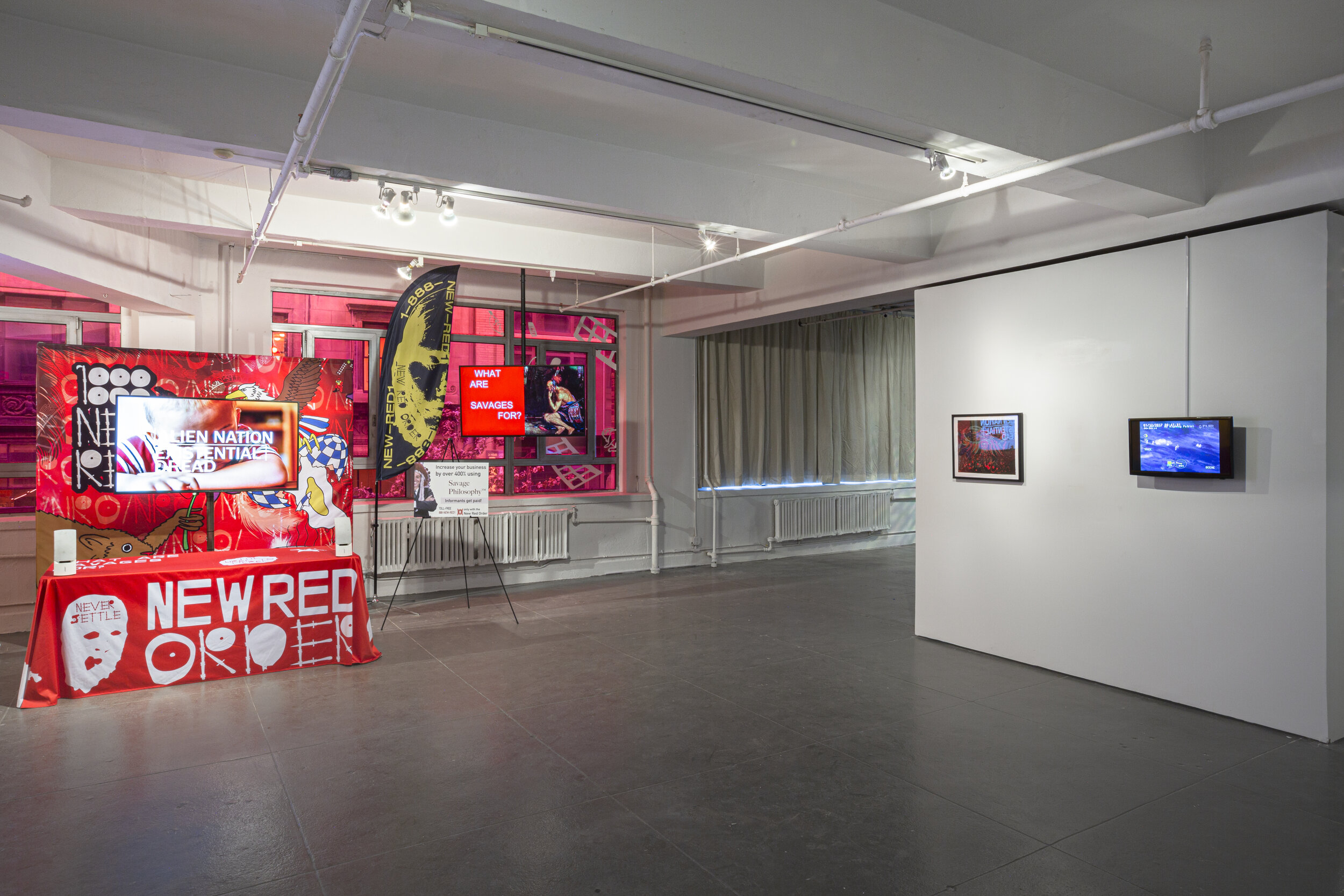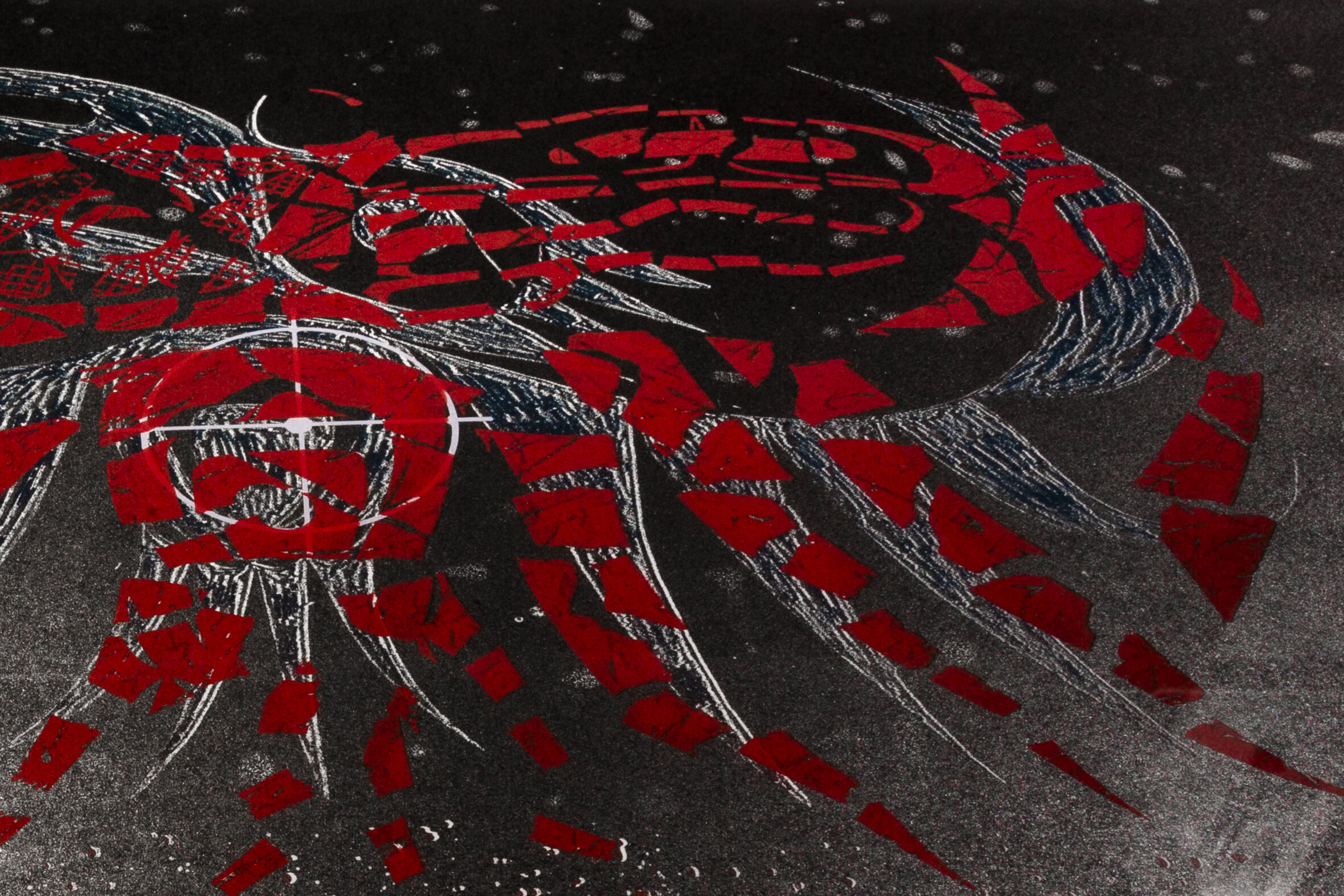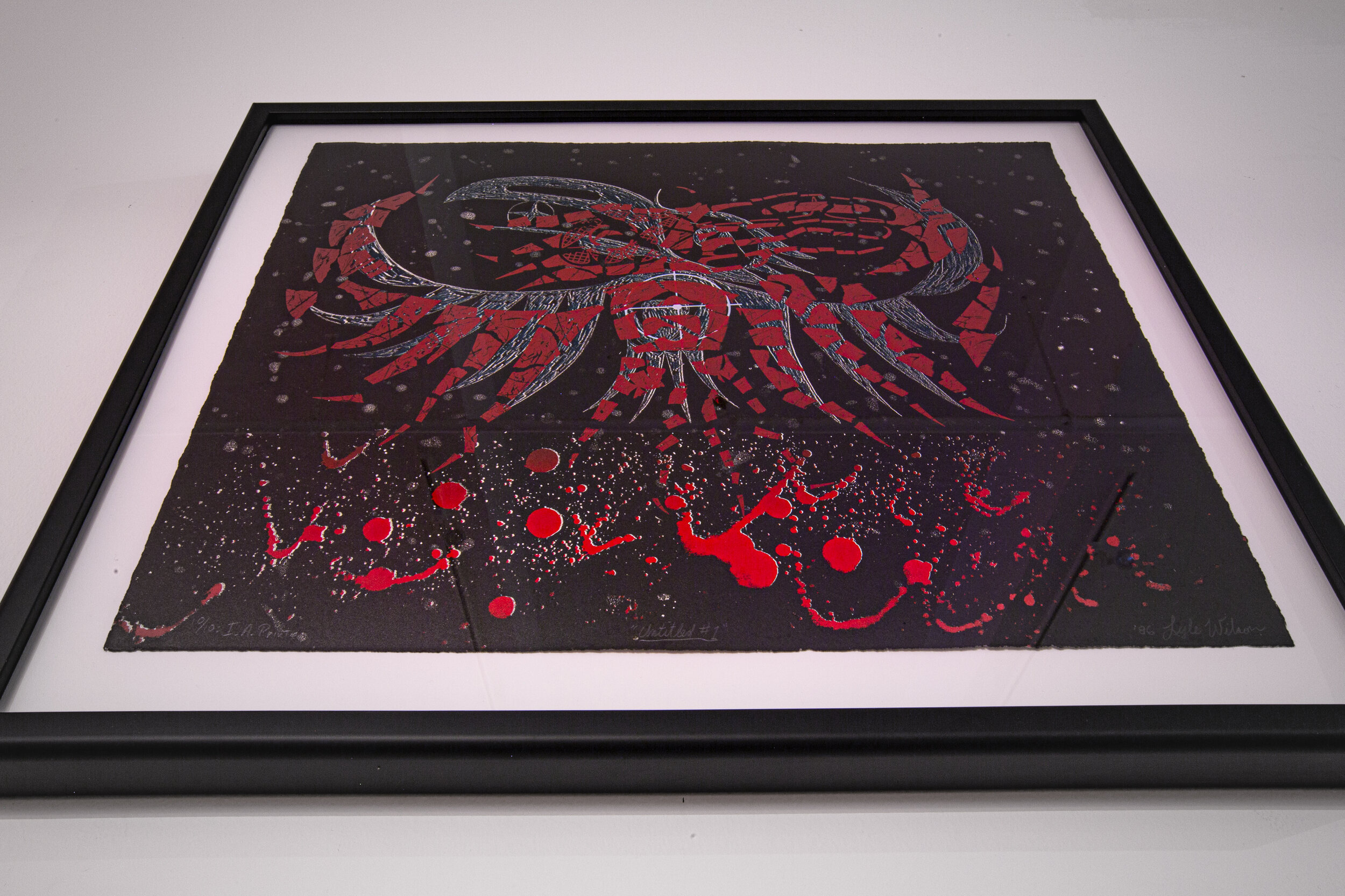Lyle Wilson
Lyle Wilson
Untitled #1, 1986, silkscreen and lithograph print, 15 x 19 in
Courtesy the artist
In this early print, the Haisla artist Lyle Wilson visualizes the often violent relationship between Indigenous and settler colonial political orders. Red and grey images of Wee-git, the Haisla name for the famed trickster figure Raven, are superimposed and depicted in the curvilinear Northwest Coast Native style known as formline. Here, however, Raven has become a target and his red formline is shattered. Bloodlike drips further suggest violence, and Wilson visualizes the tensions between settler and Indigenous communities, anticipating conflicts such as the Oka Crisis and Gustafsen Lake standoff only a few years later. The blockade and land occupation tactics used by Indigenous activists during these confrontations, as in recent front line activism, are resurgent political actions that render the asymmetrical relationship with the settler state obsolete. Likewise, the asymmetries of Wilson’s print layer contemporary and historic aesthetic orders, only partially relegating Raven’s wholeness to the background where he waits to emerge with the light of the sun and the stars still held in his beak.
DESCRIPTION
A selection of views of the New Red Order installation framing a viewing alcove in the gallery’s main corridor. In the viewing alcove a turquoise meandering line is painted on the back wall of the gallery over white, yellow, and red triangular sections as part of the New Red Order’s wall installation titled Progenerator. The New Red Order Recruitment Station installation is visible on the right side of the image, including the table, video monitors, banners, and transparency and vinyl covered windows. Progenerator, features two painted walls, meeting at a ninety degree angle, with a continuous design painted across them both. The left wall is approximately eight feet high and has a gap between the top and the ceiling, while the right wall reaches the ceiling of approximately twelve feet high. The design painted on the wall consists of four triangular quadrants in yellow, red, dark brown, and white. The quadrants meet at a center which is located slightly to the right of the wall joint. A turquoise river-like line meanders across the walls, moving from the top left of the left wall, across both walls moving up and down on the surface, before terminating in the bottom right corner behind two white pipes. Text, prints, video monitors, and other paraphernalia are hung, studio style, on the two walls. These include images of white Americans dressed up as Native Americans, historic artifacts related to the Improved Order of the Red Men, and Manifestos and Histories of the New Red Order.
ARTIST BIO
Haisla artist Lyle Wilson was born in 1955 in the community of Kitamaat Village. The name Kitamaat means “People of the Snow,” and Lyle’s exposure to his cultural roots nurtured a conscious appreciation of Haisla art and its importance in his cultural traditions. He attended the University of British Columbia and Emily Carr College of Art and Design, from which he graduated with a diploma in printmaking in 1986. Lyle’s graphic works have since been exhibited broadly in Canada and the United States. In 1987, Lyle collaborated with the UBC Museum of Anthropology’s graphic designer, Bill McLennan, on the image-recovery project The Transforming Image. He was subsequently involved in the Native Longhouse Project, for which six longhouses, representing six different tribal groups and designed to respect historical architectural forms, were installed in the Grand Hall of the Canadian Museum of History (formerly the Canadian Museum of Civilization). In the decades since then, Lyle has continued to create stunning works of art inspired by his cultural heritage. He has since expanded his repertoire to include wood carvings and jewelry. Lyle also became the first Northwest Coast artist to have his work collected by the Canada Council Art Bank Collection in Ottawa, Ontario. Today Lyle’s work can be found in prominent public, corporate, and private collections in Canada, Europe, and Asia.
ABOUT THIS PAGE
This webpage provides both images and description to render a virtual experience of each artist’s work. Below is an image gallery that includes installation shots and details of Lyle Wilson’s work. In-depth written descriptions that provide visual, auditory, contextual, and other sensory information are available below the image gallery.
Exhibition Photography © EFA Project Space/Yann Chashanovski


